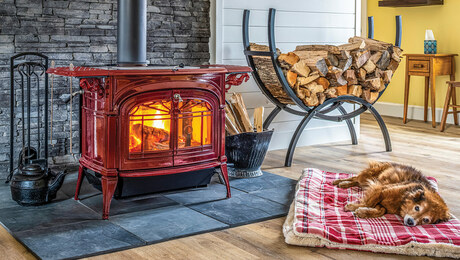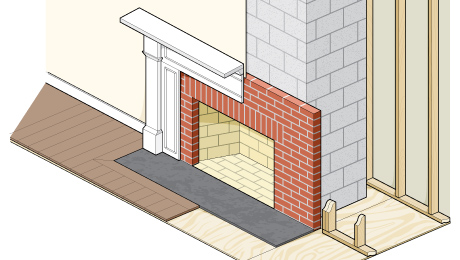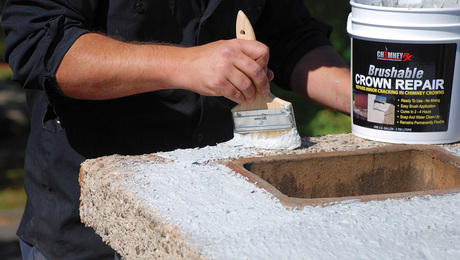Q:
The fireplace in Richard T. Kreh Sr.’s article Building an Efficient Fireplace has a smoke shelf, but it also has an interior chimney. As I understand it, the smoke shelf helps to form the convective loop that carries smoke up the chimney. On an exterior chimney where only one side of the flue is facing indoors, the cool exterior side promotes convection. But how does a smoke shelf work when the fireplace and flue are inside and the flue walls all start out at the same temperature?
Bill Rose, Champaign, IL
A:
Richard T. Kreh Sr., an author and masonry consultant in Frederick, Maryland, replies: The smoke shelf serves the same function of helping to create a convection loop inside the flue regardless of whether the chimney and fireplace are inside or outside the house. Cool outside air travels down the flue, strikes the smoke shelf, mixes with warm air from inside the room or firebox, and returns up the chimney, taking fireplace smoke with it.
It would seem reasonable that the cool outside wall of a flue built on an exterior wall of a house would have a stronger convection loop and therefore a stronger draft. However, having built many fireplaces and chimneys both inside the house as well as outside, I’ve never observed any real difference in draft between the two chimney configurations.
I checked with the Brick Institute of America (703-620-0010) to see if any research had ever been done comparing fireplaces with and without smoke shelves or interior vs. exterior fireplaces and chimneys. Their engineering department told me that to their knowledge, no such research had ever been done.
One factor that does affect the amount of draft is the difference between the temperatures inside and outside the house: the greater the difference, the stronger the draft. In other words, the draft will be stronger on a winter day when it’s cold outside and warm inside than on a day when the temperatures inside and out are nearly the same, such as in late spring. Another factor that influences the amount of draft is the source of air for combustion. In older houses that aren’t airtight, sufficient air is sucked from cracks around windows or doors to maintain combustion. But with tighter houses, a vent must be built into the firebox to supply outside air to the fire.

























